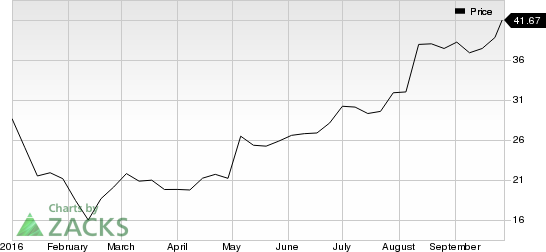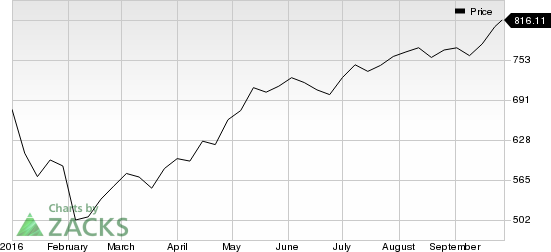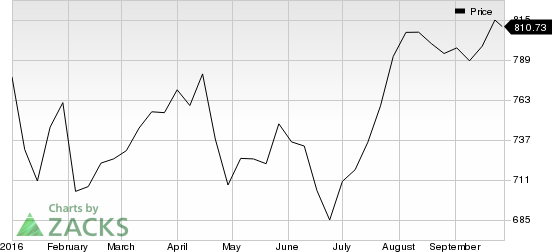With UberEats set to take off in at least 22 new countries across the world, it seems like a good time to take a closer look at what’s going on in this market segment.
Restaurants have themselves taken care of deliveries for a very long time and it’s only in recent years that delivery became a business proposition in itself. The advantage for restaurants is obvious: by outsourcing delivery to third parties, they can focus resources on improving the menu and servicing more orders. Most delivery companies send the order to the restaurant, which gets the food cooked and packed for a delivery man to pick up and drop off at the customer.
This is particularly good for smaller players with more limited resources or not enough real estate to provide for seating arrangements, i.e. the classic takeout joint.
The downside is of course the restaurant’s brand, which may be impacted if the delivery service is unsatisfactory or if the delivery staff is impolite. Plus the fact that customer data has to be ceded to the delivery company.
Operations that can make the most of this data are necessarily companies with the wherewithal to invest in suitable technology to create a platform that both users and restaurants can interact with. They should also be equipped to create a network of delivery people, and maintain or arrange for a fleet of vehicles and plug them into the system. Even then, growth will be difficult without a good marketing team that can get more restaurants on board.
Given these basic requirements there are currently just a handful of delivery companies that can boast any degree of success and unsurprisingly, they are all technology companies.
Restaurant Industry Factors Supporting Delivery
Matching speed, convenience and price: Restaurant delivery has got to be fast and hassle-free, which is a characteristic it shares with fast food. But it needn’t be dirt cheap or low-quality, at least for most people, which is a characteristic it shares with casual dining. On the other hand, it’s also not like fine dining, which would include ambiance, service etc and so be best experienced in the restaurant. So delivery services essentially deliver to the new fast-casual trend, i.e. the demand for decent quality and convenience at a decent price.
Selling One Idea: Quick service restaurants, the broad industry name given to both fast food and fast casual restaurants, thrive on being able to sell one idea or experience. It’s the kind of place you head for when you know exactly what you want whether its burgers, pizza or a sandwich, or whether it’s Chinese or Mexican. In case of geographically diverse chains, the goal is to keep the restaurant experience consistent across all outlets, so again you know exactly what you’re heading for. Since it isn’t variety but volumes that drive the business, a delivery service can help by reaching more people.
Essentially Local and Getting More So: People generally don’t go out of their way to visit these restaurants, so growing traffic is a bit of a challenge. There is also a limitation on differentiation, because new competitors can crop up and sell the same thing next door. Customers are driven mainly by taste and price although quality is growing into more of a factor.
Part of the drive for quality is a call for locally-sourced fresher ingredients, which can bring an element of local taste to the food. Partnering with a delivery company can get more people to try the food and if the taste agrees with them, there will be repeat orders.
Growing Pressure from Worker Groups: Restaurants are a labor intensive business, because every aspect of operations requires personnel involvement, whether it’s cooking, cleaning or packing/serving. So labor costs are significant. Smaller fast food restaurants are therefore unable to provide living wages in some cases, leading to labor unrest.
For the restaurateur under pressure to keep prices down, it’s practically impossible to pay a decent wage. On the other hand, cooking staff is of utmost importance because a high turnover will result in varying tastes and can turn customers away. The trend toward fast-casual is therefore a blessing as it allows higher pricing, more variety (therefore differentiation) and supports slightly longer delivery time.
So What Are Food Delivery Companies Doing?
It’s important to note here that all restaurant formats are likely to co-exist, because there is a time for drive-ins and a time for home delivery. And the same people don’t generally do the same thing every day. People do try variations, as long as the food is hot, healthy and tasty and doesn’t set you back too much.
GrubHub
One of the most illustrious food delivery companies, GrubHub (NYSE:GRUB) has partnered with 45K restaurants across 1,100 U.S. cities and London, and this list continues to grow. The company has been testing a new recommendation platform, which is reportedly doing a good job connecting diners with restaurants. Earlier this month, Morgan Stanley (NYSE:MS) analyst Brian Novak expressed confidence in the platform, saying that the recent increase in orders per diner was now sustainable. He also raised his estimates and price target on the shares.
Based on his own estimates and company data, Novak believes GrubHub has cornered 23% of the market, just a point behind Dominos and way ahead of Pizza Hut, Papa John’s, Jimmy John’s, Eat 24, Postmates, Door Dash, Caviar and UberEats, which control 19%, 14%, 4%, 2%, 2%, 2%, 1% and >1% of digital delivery orders, respectively. So basically, other than the pizza chains, this is the only company that has made serious headway.
Just yesterday, Canccord raised its price target on GRUB shares citing the recent brand refresh, ongoing product improvements, delivery network and maturing tier two markets, that will help business metrics in the second half of 2016.
Yelp
Restaurant review company Yelp (NYSE:YELP) has struggled for a number of years now because of the poor impression it created amongst both customers and businesses. Customers have moved away because of the growing evidence of fake reviews while business owners have complained about the lack of transparency in the advertising business from click through to sale.
But Yelp saw its shares jump up in May as the number of reviews increased, offering evidence that the site remained popular. Last year, the company decided to move away from brand advertising in favor of local and entered the delivery market through its acquisition of Eat24.
According to Benzinga, which quotes TickerTags data about social media mentions of delivery services, Eat 24 mentions are down 33% sequentially and 21% year over year compared to increases of a respective 113% and 1081% for UberEats and a respective 11% and 92% for Postmates.
Uber
Uber is better known as a ride hailing company, so it figures it can deliver hot meals just as easy as it transports people. True enough it already has the network of cars and drivers to do the job and an app that many people all over the world log on to every day. So it can advertise the new service and list the restaurant menus quite easily.
The company started its restaurant deliveries in the U.S. with minimum fanfare, charging around five bucks as delivery charges. Initial results must have been quite good because the company has now decided to launch the service in 22 countries in the EMEA region (Amsterdam, Brussels, Dubai, Johannesburg and Stockholm before year-end).
Postmates
Postmates charges a $5 delivery fee for delivery within an hour, around 80% of which is passed on to the delivery person an incentivize them to deliver more. Its GPS system tracks the man closest to the store in question, who uses a bike or car to minimize delivery time. It also charges a 9% convenience fee banking on the fact that users will be willing to forego the amount to save on time and fuel.
Earlier, the company didn’t have agreement with stores/restaurants but had delivery men pick up orders for customers ordering food through its app. But this led to complaints about the temperature and packaging of food and some restaurants even tried to prevent Postmates delivery men from collecting orders. So it has now started a merchant program wherein it ties with stores/restaurants, similar to other companies.
Amazon
Amazon (NASDAQ:AMZN) is just starting out and may be expected to creep up from behind and steal a big share of the market. That’s because Amazon is offering delivery services free, while charging restaurants around 27% of order value. Moreover, the service is only available to Prime members, so it serves as a lure for non-Prime buyers on Amazon. Prime members spend more on Amazon so there are synergies in there.
Amazon’s service is far more expensive for restaurants than GrubHub’s which charges between 13% and 20%, with the rates varying depending on the placement of the listing on its website (like ranks on Google’s search engine results page). GrubHub also charges users up to $5 for the delivery service.
Amazon is probably using its Prime base to promise higher sales to restaurants, but the model may be re-worked because restaurant delivery is a local business, and you can’t deliver hot food to people all over the state, let alone the country or the world. So if sales growth falls below expectations, this may become another loss leader.
Alphabet’s (NASDAQ:GOOGL) Google hasn’t entered food delivery business yet, but judging from its interest in drones and self-driving cars, it is definitely exploring use cases for these things. Particularly since the company recently tested delivering Chipotle (NYSE:CMG) burritos via drone at the testing grounds.
Amazon is definitely the most buyable stock discussed in this piece, as evident from its Zacks Rank #2 (Buy). The other tech stocks have a Zacks Rank #3 (Hold), while CMG has a Zacks Rank #4 (Sell). Choosing the right stock can however be tricky in an unpredictable market, so it makes more sense to go for something more sure-shot. So cast aside all uncertainties and take a look at the complete list of today’s Zacks #1 Rank (Strong Buy) stocks here.
Now See Our Private Investment Ideas
While the above ideas are being shared with the public, other trades are hidden from everyone but selected members. Would you like to peek behind the curtain and view them? Starting today, for the next month, you can follow all Zacks' private buys and sells in real time from value to momentum . . . from stocks under $10 to ETF and option moves . . . from insider trades to companies that are about to report positive earnings surprises (we've called them with 80%+ accuracy). You can even look inside portfolios so exclusive that they are normally closed to new investors. Click here for Zacks' secret trades >>
AMAZON.COM INC (AMZN): Free Stock Analysis Report
CHIPOTLE MEXICN (CMG): Free Stock Analysis Report
YELP INC (YELP): Free Stock Analysis Report
GRUBHUB INC (GRUB): Free Stock Analysis Report
ALPHABET INC-A (GOOGL): Free Stock Analysis Report
Original post
Zacks Investment Research




